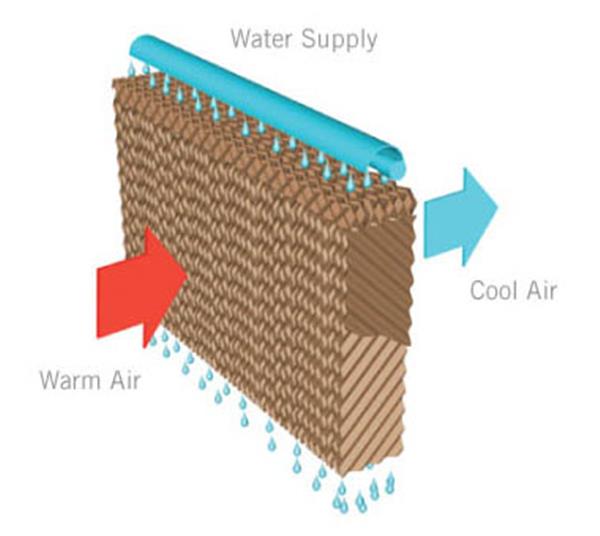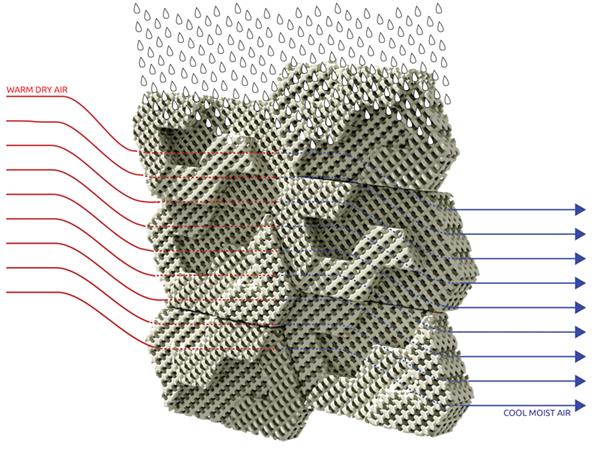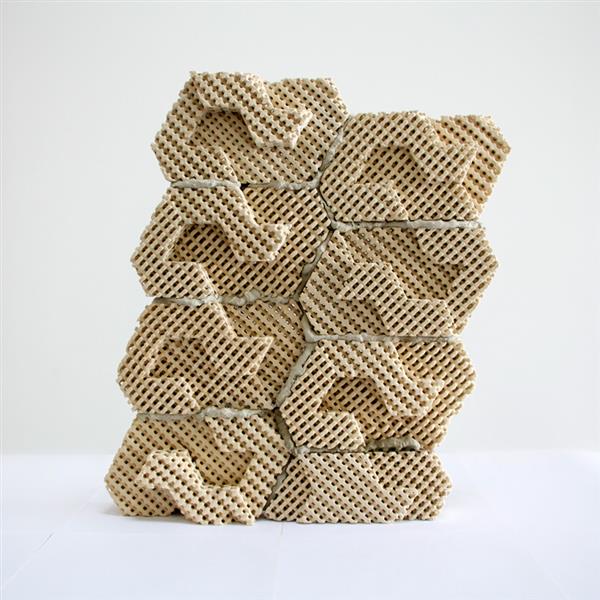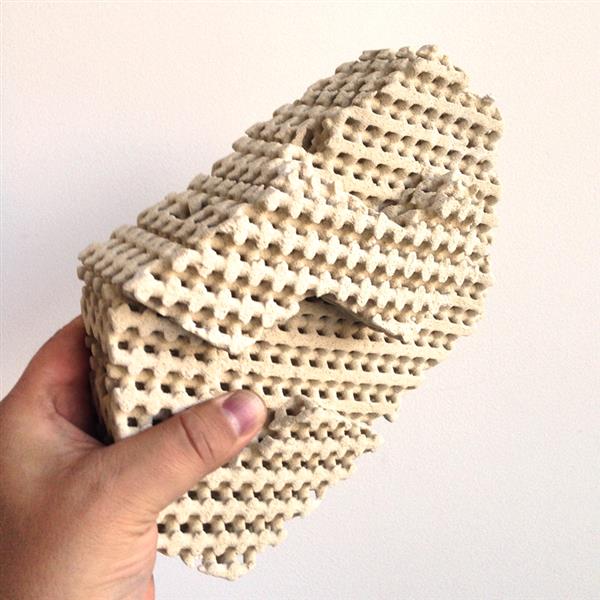In desert climates, extreme heat and dry air are not just uncomfortable, they can be life-threatening. Virginia San Fratello and Ronald Rael of The Emerging Objects Corporation may have found a natural cooling solution for increased safety and comfort in arid areas.
Evaporative cooling is the process of adding water to the air, causing the temperature to drop, and increasing the moisture in the air, 3ders reports. The technique itself is ancient, but San Fratello and Rael have applied it to a 3D-printed brick prototype, called Cool Brick.
The prototype was inspired by the Muscatese Evaporative cooling window, a system that combines a wood screen and a ceramic vessel filled with water. The Cool Brick is made of porous ceramic bricks set in mortar. The bricks absorb water and are designed as 3D lattices that allow air to pass through the wall.

The water held in the micropores of the ceramic bricks evaporates as air moves through the system, bringing cool air into the building interior. This process results in cool, moist air while using less energy than other cooling techniques.
The Cool Bricks are modular and interlocking, meaning that they can be assembled as needed for the particular space where they’re installed. The lattice structure creates a tight bond when set in mortar. Meanwhile, the shape of the brick creates a shaded surface on the wall, keeping that portion of the wall cool.
The Cool Brick can be viewed at Data Clay: Digital Strategies for Parsing the Earth until April 19, 2015, at the San Francisco Museum of Craft and Design. Tehton 3D, a 3D printing company that specializes in custom applications for ceramic 3D printing, sponsored the project.


Related Stories
| Aug 11, 2010
70% of Qualified Trade Association Members Attain “Green Brick Specialist” Designation in Comprehensive Training Program
The Brick Industry Association (BIA), the national trade group representing distributors and manufacturers of clay brick and suppliers of related products and services, has announced that 70% of its eligible members have passed the industry’s first-ever online training program, “Sustainability/Green Building Design and Brick.”
| Aug 11, 2010
VAST Enterprises wins "Design for Sustainability"
VAST Enterprises, LLC announced that it won the "Design for Sustainability" Award from the Plastics Environmental Division of the Society of Plastics Engineers. VAST received the honor as part of the 2010 Environmental Stewardship Awards competition.
| Aug 11, 2010
Recycled Pavers Elevate Rooftop Patio
The new three-story building at 3015 16th Street in Minot, N.D., houses the headquarters of building owner Investors Real Estate Trust (IRET), as well as ground-floor retail space and 71 rental apartments. The 215,000-sf mixed-use building occupies most of the small site, while parking takes up the remainder.
| Aug 11, 2010
AIA Course: Historic Masonry — Restoration and Renovation
Historic restoration and preservation efforts are accelerating throughout the U.S., thanks in part to available tax credits, awards programs, and green building trends. While these projects entail many different building components and systems, façade restoration—as the public face of these older structures—is a key focus. Earn 1.0 AIA learning unit by taking this free course from Building Design+Construction.
| Aug 11, 2010
AIA Course: Enclosure strategies for better buildings
Sustainability and energy efficiency depend not only on the overall design but also on the building's enclosure system. Whether it's via better air-infiltration control, thermal insulation, and moisture control, or more advanced strategies such as active façades with automated shading and venting or novel enclosure types such as double walls, Building Teams are delivering more efficient, better performing, and healthier building enclosures.







